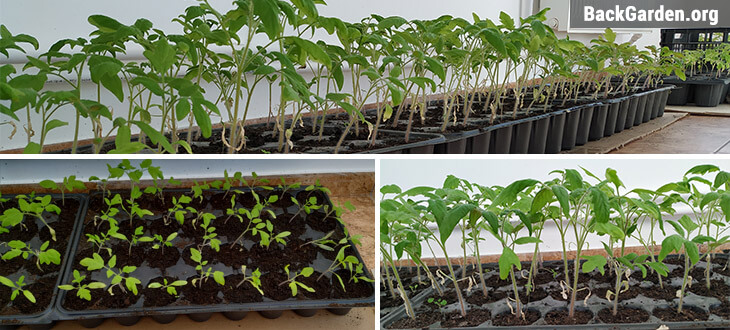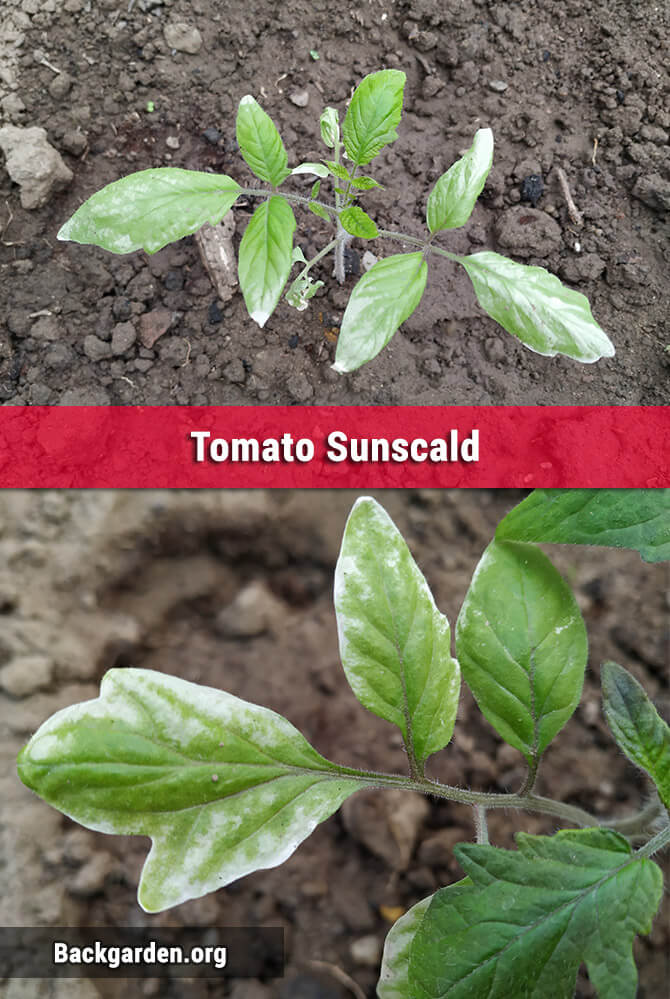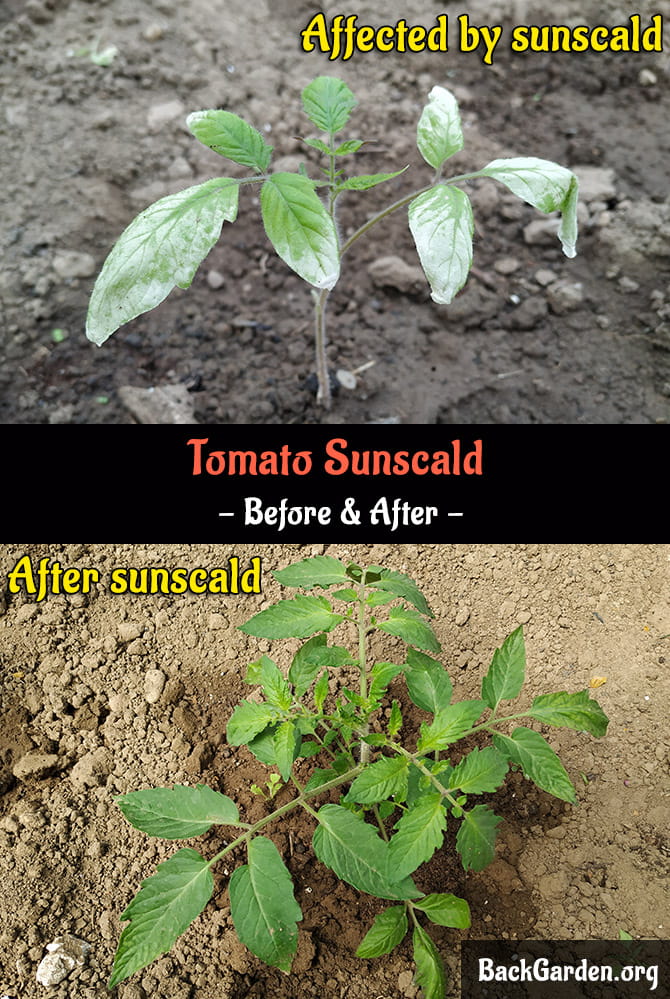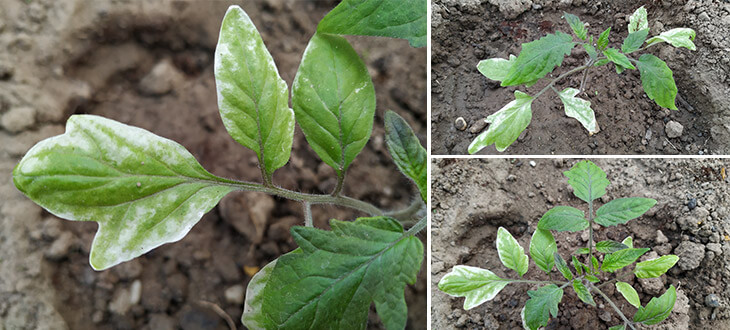Tomato Leaves Turning White – Causes & Treatment
Are the leaves of your tomato plants turning white and they are drying out? This post will explain the causes, what to do to save your plants and what you can do in the future to avoid this problem.
This was the first year when I decided to plant my own tomato seedlings instead of buying them.
I planted the tomato seeds in January and I moved them in my greenhouse at the beginning of April.
The weather was a bit unpredictable. There were days when the outside temperature went over 20-degree Celsius and other days when it dropped to less than 10 degrees.
The tomato seedlings grew nicely since I kept them in a heated hallway that has many windows. Therefore, there’s was plenty of light reaching out to the plants.

Everything was great until I transplanted the tomato seedlings into the greenhouse.
The first two days, the plants looked very good and had no signs of transplanting stress.
The next days, the leaves of some tomato plants started to turn white and the edges of the leaves started to dry out.

I really had no clue why.
At first, I thought the plants are lacking magnesium, but the leaves seemed to be more white than yellow as in the case of magnesium deficiency.
I used my friend Internet to search for an answer and after reading several articles, I concluded that my plants were affected by sunscald.
Since this was the first time I grew my own tomato seedlings, I didn’t know that the plants can be hit by sunscald if I move the plants directly from indoor to the greenhouse.
Even though the seedlings had a lot of light in the hallway where they were placed initially, the sun rays didn’t really reach the plant leaves directly.
Fortunately, there were several cloudy days after I transplanted the seedlings and the sun wasn’t really that strong. That might have just saved my plants from drying up completely.
Contents
Common Causes Why Tomato Leaves Turn White
Here are several interesting facts I found related or similar to my problem.
If the leaves of your plants are turning white, this is usually caused by:
- Exposure to intense sunlight (sunscald)
- Overwatering your plants
- Too much fertilizer
- An acute deficiency of nutrients (calcium, nitrogen, phosphorus, etc.)
- A fungal disease
Last year, my tomato plants faced a fungal disease called early blight (you can read more about that here). However, the symptoms were a bit different.
Tomato Sunscald Treatment
Sunscald is not a plant disease, but more a sunburn that affects plants.
I can probably say that sunscald is more of a plant sensitivity to the UV rays and intense light.
Sunscald doesn’t only occur on tomatoes. It can also affect peppers, cucumbers, corn leaves, trees leaves and their fruits, eggplants, pumpkins, strawberries, and so on.
Unfortunately, since sunscald is not a disease, there’s no treatment for it. In fact, the best treatment for sunscald is prevention.
If your plants have been affected heavily, there aren’t many things you can do to save them.
Still, if the tomato plant stem and the growing tips are still green, the plant has a good chance to rebound.
Watch the short video below to make a better idea of how my seedlings looked like after their leaves started to turn white.
The affected leaves will eventually die off and fell down.
If your tomato plants are big enough, you can even speed up this process by removing the affected leaves since these won’t regenerate.
In my case, the sunscald affected my tomato seedlings after I transplanted them from an indoor environment where the plants were safe from direct sunlight, to a greenhouse where the sun rays reached the plant leaves directly.
Even though seedlings are more predisposed to be hit by sunscald, it seems like the full-grown plants can also be affected.
In the case of an adult plant, sunscald will usually affect the fruits of the plant. When these grow in lower light and suddenly are exposed to higher light levels, these can easily be affected by sunscald.
For example, a pumpkin that grows most of the time covered by the leaves of the plant.
How To Prevent Seedlings Sunscald
My mistake was that I didn’t give my tomato seedlings any time to adapt to direct sunlight.
More exactly, if you keep your seedlings in an environment where the sunlight doesn’t hit the plants directly, you have to gradually expose the plants to direct light.
Therefore, before you transplant your seedlings to a greenhouse or directly in your outside garden, take your plants outside for several hours per day to harden them.
Leave your plants in the sun for about 1-2 hours the first day, then increase the sun exposure gradually for at least 7 days before you transplant the plants.
When you feel like your plant is ready to handle a full day of sun, your seedlings are ready to be moved to your greenhouse or garden.
Conclusion
Just as babies, plant seedlings are sensitive and more predisposed to various diseases.
When you grow your seedlings in a closed environment, the plants’ immune mechanisms are weaker.
Therefore, to avoid issues like sunscald, the plants need to be hardened off and gradually adapted to natural conditions like full sunlight and wind before you permanently transplant them to your garden or greenhouse.
Unfortunately, I didn’t know this before I transplanted my tomato seedlings and my poor plants had to suffer the consequences.
I’m still learning from mistakes and I will avoid this issue the next year.
Update: Fortunately, all my tomato seedlings have fully recovered after sunscald, even though I was really skeptical that the plants would survive.
It took about two weeks until the plants started to grow new green leaves since the transplanting.
I also gave them a little boost with a bit of fertilizer since my garden soil is not very nutrient-rich.


